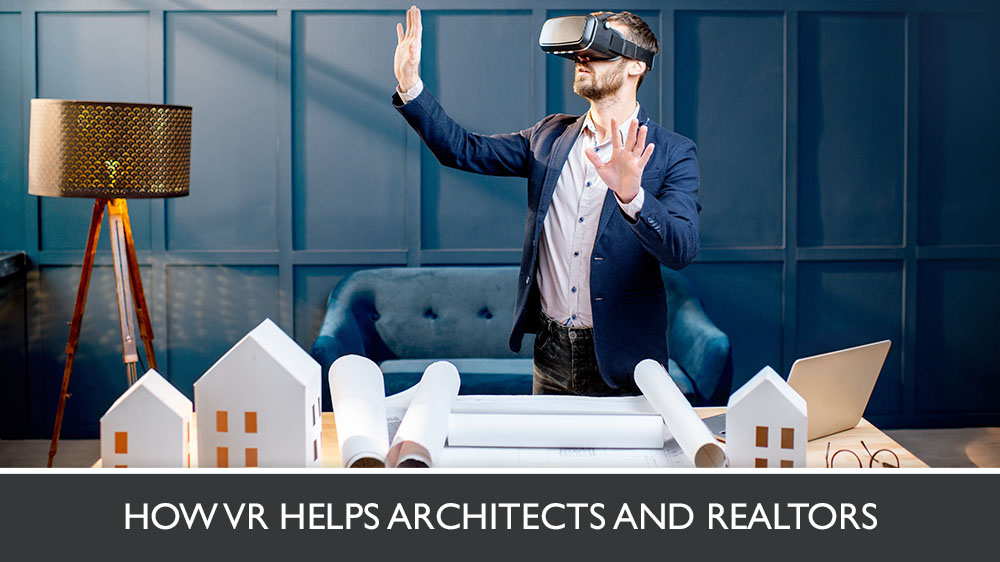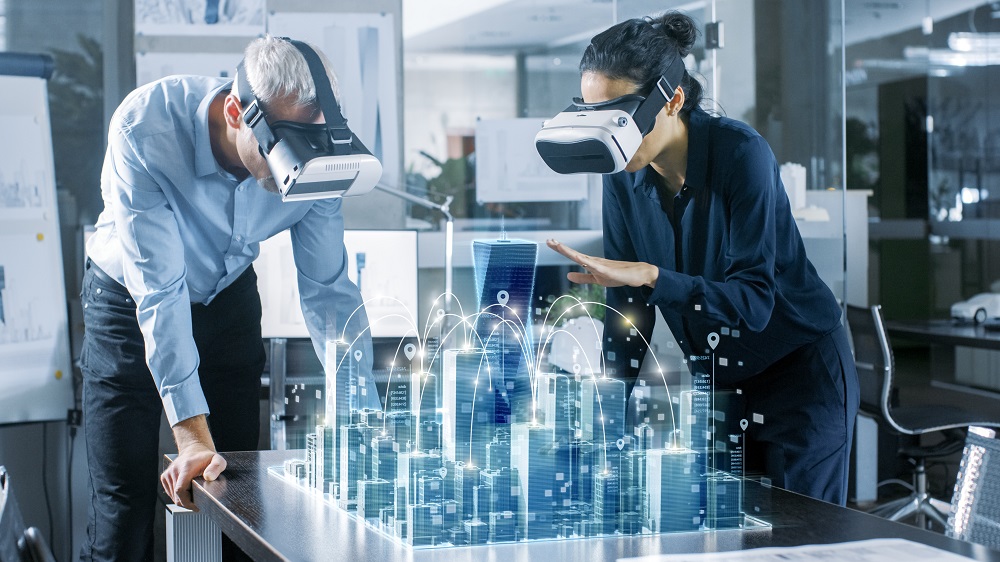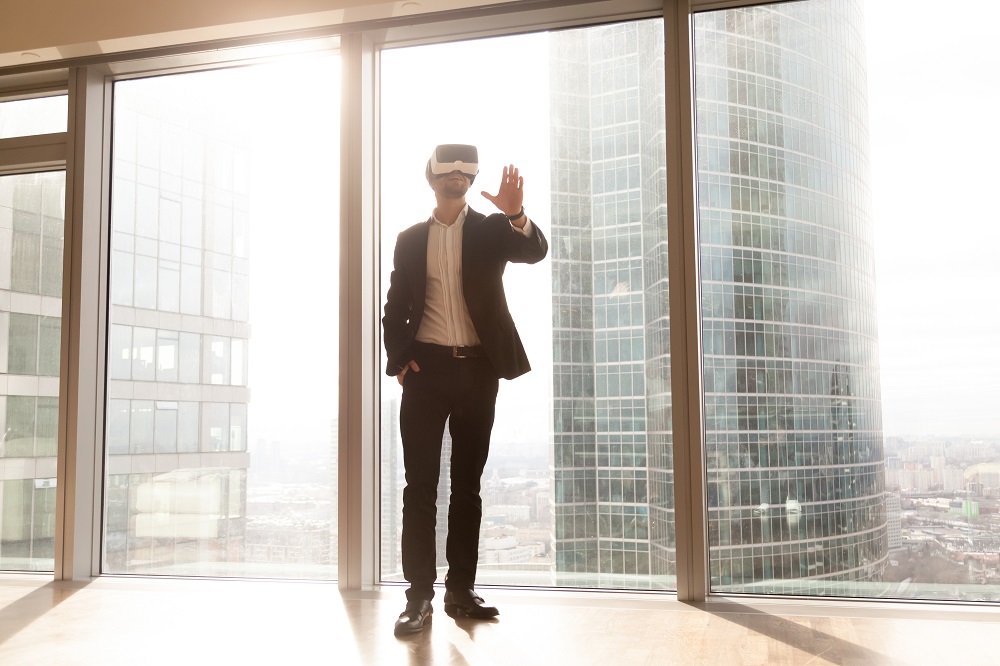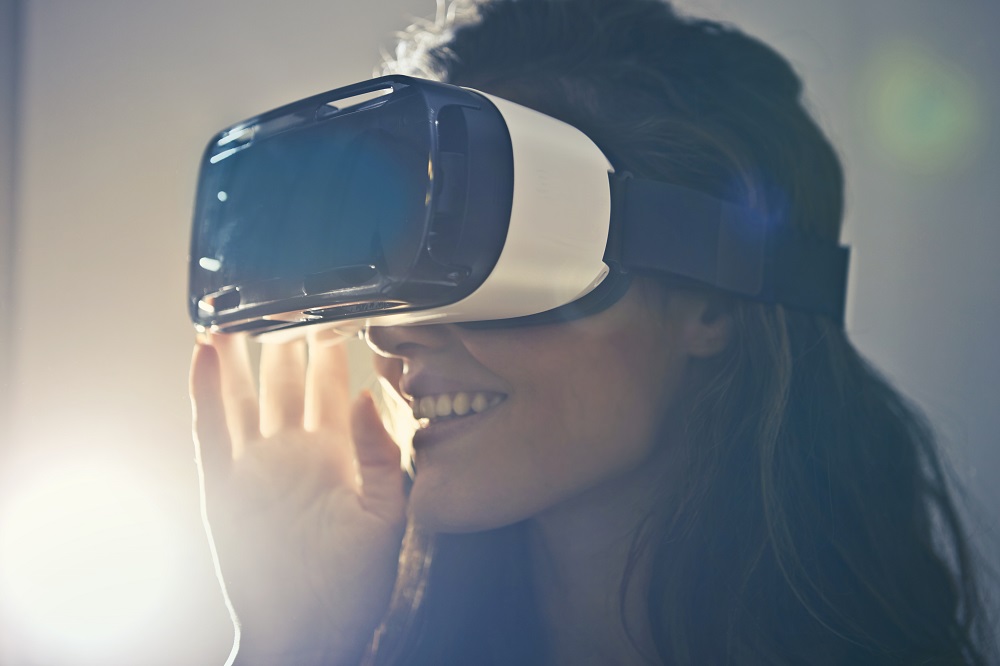People knew what VR was even back in the 80s. However, only in the 2010s, this amazing technology has taken the spotlight, completely changing the way we can interact with the digital dimension. But virtual reality technology is not just fit for entertainment. This time, we will prove that VR can enhance architectural and real estate businesses as well.
Modern clients of architecture and real estate businesses are in tune with innovations and have become quite spoiled when it comes to the content they are willing to consume. It’s not enough to create an amazing exterior or interior design and pitch it to stakeholders with a few sketches and drawings. It’s not enough to just explain the benefits of a property to customers with words. Even photoreal 3D renders that are indistinguishable from real-life shots are sometimes not enough. Clients wish to get a deeper understanding of an architectural project, to really feel like it’s the one for them. And virtual reality lets them do just that. Let’s find out how exactly VR can strengthen real estate and architecture presentation!
#1. Showcasing architecture with VR leaves a deeper impression than regular CGI
When an architect wants to pitch a project or when a realtor needs to sell a property, the customers need to be shown impressive and memorable visuals. In both cases, CGI is more than a viable option. For architects, it’s the ability to showcase their projects before the first brick has been laid. For realtors, it’s the ability to show unfinished houses or apartments in all their potential glory. But static 3D visuals and, to some extent, 3D animation are already commonplace. Chances are the people an architecture specialist or a realtor are trying to impress have already seen “something like that” dozens of times. Fortunately, virtual reality technology can be a trump card for this situation.
Showcasing buildings with VR introduces a new level of immersion. Interactive virtual tours are impressive even on the screen, but what would happen if viewers experience it “through their own eyes”? This kind of virtual reality action would leave a lasting impression on people who might be unconvinced by regular CG visuals. If an architect or a realtor wants more involvement, an interactive VR tour will add a new layer of memorable experience by giving customers an ability to explore the building at their own pace and get a more tactile feel of the place.
#2. Virtual reality takes viewers on a journey to the future
One might ask, “3D renders and animation can showcase how the building will look like when it’s finished just fine. Why spend extra money on expensive virtual reality technology?”. True, VR is a serious investment and is usually not meant for regular projects. However, if the design is promising huge returns and the stakes are high, VR technology might be the thing that seals the deal.
The main advantage of CGI, as was mentioned, is the ability to visualize projects that aren’t even approved yet. VR technology can spice this feature up. A virtual tour that gives clients and investors a great opportunity to not just see the future building in all its glory, but also “place” them at the scene. This is quite a unique experience, almost like traveling in time! After the viewers will personally take in the atmosphere of the future house or apartment, they will be probably more willing to approve the project.
#3. VR showcases the potential of unfinished properties in an interactive way
Realtors often have to sell unfurnished or newly-built properties. This causes several issues, but the main one is the fact that an average buyer is often unable to understand the full potential of a house or apartment. For this very reason, one of the primary marketing ideas for real estate agents is to use CGI to visualize the possible look of such projects. And again, this is a fine solution in most cases. But what if a real estate company wants to market to high-value clientele? For scenarios like these, virtual reality technology is a life-saver.
Picture this. A company conducts a virtual tour of the exterior and interior of a building for a potential buyer. But instead of being an idle viewer, he or she can not only touch but also move furniture and decor, change the paint job or add extra elements to the scene. This will not only make the presentation more memorable but also personalize the experience and give a sense of ownership. Which is often enough to secure a deal.
#4. Customers and investors can experience properties without having to visit them
Sometimes a potential customer has no time to visit the site or it is located in a hard to reach the place. In this case, it would be a good idea to use 3D visualization or animation, but the potential buyer has probably seen CGI dozens of times. How to impress such clients without dragging them to the company’s office? Time to bust out the big guns — virtual reality technology.
Modern VR advancements make it possible to use this awesome tech with just a pair of goggles made from cardboard and a smartphone. This way, users can experience a virtual tour without even leaving their homes! Sure, it won’t be just as impressive as full-dive virtual reality immersion with Oculus or HTC headset. But it is easily compensated by the fact that there’s no need to go anywhere. Laziness sells!
#5. Virtual reality technology can be used to provide handy instructions for tenants
Realtors don’t just sell properties. Oftentimes people rent houses or apartments, and this requires a lot of communication between them, the owners, and the agencies organizing the process. And since tenants aren’t in full possession of their homes, every issue they run into requires them to consult the landlord or landlady. How to use the thermostat without breaking it? Who to call in case of an emergency? How often should the cactus be watered? These and many more questions can crop up at any point, and the owner might be unavailable at that very moment. So, what to do?
Virtual reality technology can be used to create interactive instruction manuals for tenants. Every potential issue is documented and explained in detail with voiceover, and the viewer can see how to do everything right instead of just hearing it on the phone. It saves a lot of time, effort, and nerves — a win-win for everyone!
Virtual reality technology has innovated many industries, and architecture, as well as real estate, weren’t left behind. VR tours are much more memorable than 3D renders and even animations, leading to a higher chance of getting projects approved or properties sold. Virtual reality users can not just see their future home in all its glory, but also take in the atmosphere of the place as if they are already living there. Advanced VR technology also allows users to move the objects and change the scene, providing a unique sense of ownership. VR is extremely handy as interactive instruction manuals for tenants of rented homes. Finally, modern technology makes it possible to use virtual reality from the comfort of one’s home without expensive setups. Which makes it possible to provide investors and potential buyers with virtual tours on the go.
Want to cater to modern customers’ needs with cutting edge technology? 3D videos will be a good place to start. Leave a lasting impression on stakeholders with our architectural animation services!
What is virtual reality?
Virtual reality (VR) is a computer technology used to create a simulated environment. Unlike traditional user interfaces, VR places the user inside an experience. Instead of viewing a screen in front of them, users are immersed and able to interact with 3D worlds using controllers and motion capture.
Who leads the VR market?
The major players in the VR market are Oculus, HTC, and Sony. Each is trying to introduce a new, more advanced technologies. So far, Oculus is in the lead with its Oculus Quest. It’s the first VR device capable of motion tracking with just a camera, rather than actual trackers and controllers.
What’s the difference between virtual, augmented, and mixed reality?
A lot of people mix up virtual reality, augmented reality, and mixed reality. VR offers a completely immersive digital experience, while AR refers to a type of user interface that overlays digital objects over a real-life environment. MR, as the name implies, combines VR and AR. It utilizes both technologies, making the user able to interact with a digital environment while simultaneously not taking him or her out of the real world.
What kind of architecture or real estate clients does VR work best for?
While it might seem that VR is meant to entice the wealthiest of clients, this is not the case. A virtual tour can be viewed on a smartphone, using it as a display and placing it in a makeshift pair of cardboard goggles. The VR scene, however, is quite expensive to make, so make sure that it will provide you with significant returns.










This is some really good information about virtual reality technology. It is good to know that you can use it for 3D visualization. It does seem like that would be helpful in the classroom or in prototyping things. I would want to get a good developer to help me find the right type of technology to use for what I would want to do with virtual reality.